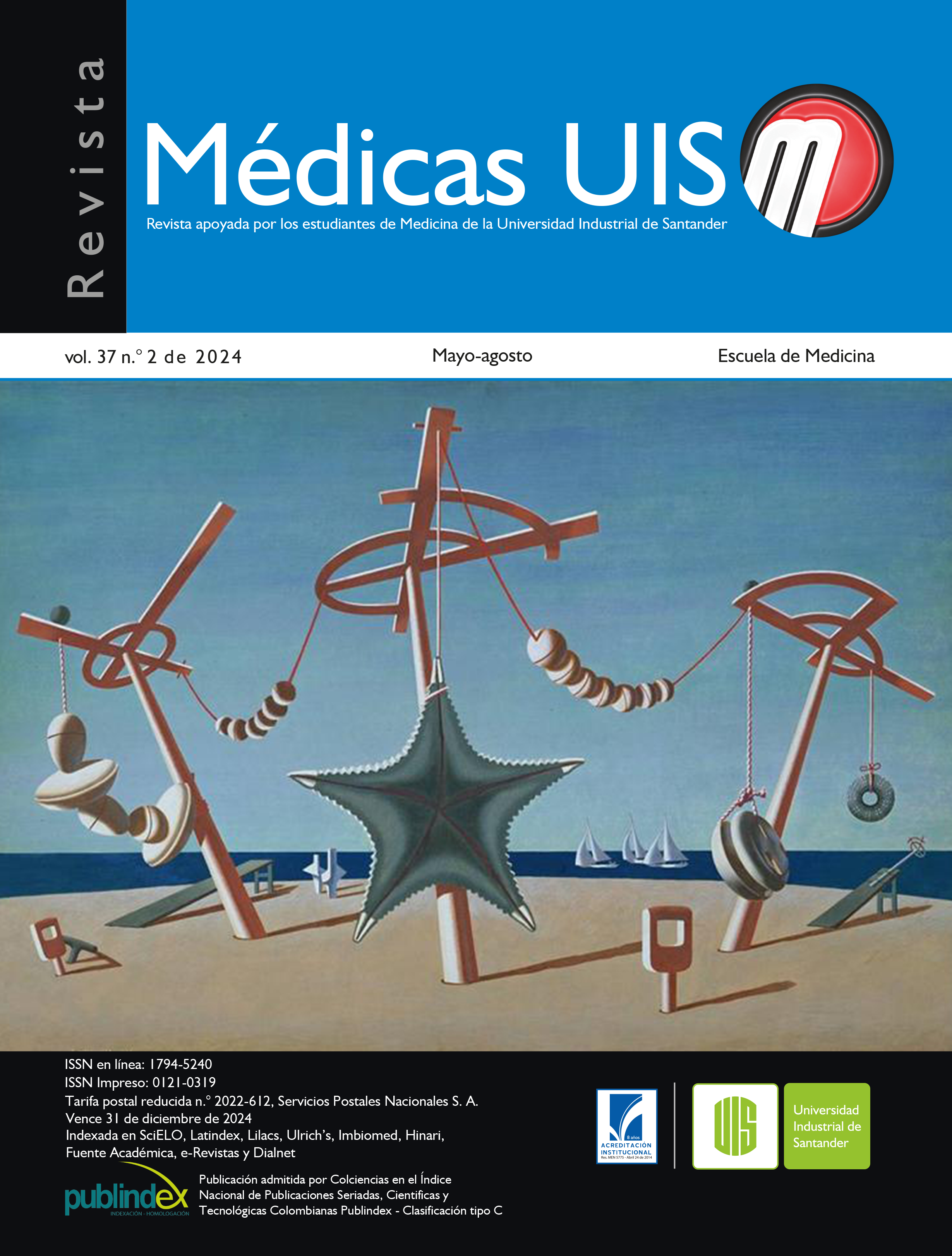Abstract
Knee dislocation is the loss of the femorotibial joint relationship associated with injuries to at least two major ligaments and occurs in 0,02 % of injuries in orthopedics. The objective of this article is to present the case of an intermediate adult patient with grade I obesity, who fell from her height with trauma to the right knee. The admission x-ray showed anteromedial dislocation in this joint, which is why she underwent reduction. closed and immobilization and subsequently a post-reduction radiography, arteriovenous Doppler and magnetic resonance imaging were performed, finding a tear of the lateral meniscus, rupture of the posterior cruciate ligaments, anterior cruciate ligament, lateral retinaculum and fracture of the head of the fibula. This case is significant as it is a dislocation in ultra-low energy trauma, in a patient with obesity, which is not the typical presentation and highlights the importance of actively searching for associated injuries.
References
Darcy G, Edwards E, Hau R. Epidemiology and outcomes of traumatic knee dislocations: Isolated vs multi-trauma injuries. Injury. 2018;49(6):1183-1187.
Mühlenfeld N, Berthold DP, Münch LN, Störmann P, Hörauf JA, Leiblein M, et al. Epidemiology of complete knee dislocations: an updated classification system. Arch Orthop Trauma Surg. 2022;142(10):2711–2718.
Heitmann M, Akoto R, Krause M, Hepp P, Schöpp C, Gensior TJ, et al. Management of acute knee dislocations: anatomic repair and ligament bracing as a new treatment option-results of a multicentre study. Knee Surg Sports Traumatol Arthrosc. 2019;27(8):2710-2718.
Vaidya R, Roth M, Nanavati D, Prince M, Sethi A. Low-Velocity knee Dislocations in Obese and Morbidly Obese Patients. Orthop J Sports Med. 2015;3(4).
Arnold C, Fayos Z, Bruner D, Arnold D, Gupta N, Nusbaum J. Managing dislocations of the hip, knee, and ankle in the emergency department [digest]. Emerg Med Pract. 2017;19(12 Suppl Points & Pearls):1-2.
Howells NR, Brunton LR, Robinson J, Porteus AJ, Eldridge JD, Murray JR. Acute knee dislocation: an evidence based approach to the management of the multiligament injured knee. Injury. 2011;42(11):1198-1204.
Carr JB, Werner BC, Miller MD, Gwathmey FW. Knee Dislocation in the Morbidly Obese Patient. J Knee Surg. 2016;29(4):278-286.
Robertson A, Nutton RW, Keating JF. Dislocation of the knee. J Bone Joint Surg Br. 2006;88(6):706- 711.
Medina O, Arom GA, Yeranosian MG, Petrigliano FA, McAllister DR. Vascular and nerve injury after knee dislocation: a systematic review. Clin Orthop Relat Res. 2014;472(9):2621-2629.
Peskun CJ, Chahal J, Steinfeld ZY, Whelan DB. Risk factors for peroneal nerve injury and recovery in knee dislocation. Clin Orthop Relat Res. 2012;470(3):774-778.
Chowdhry M, Burchette D, Whelan D, Nathens A, Marks P, Wasserstein D. Knee dislocation and associated injuries: an analysis of the American College of Surgeons National Trauma Data Bank. Knee Surg Sports Traumatol Arthrosc. 2020;28(2):568-575.
Georgiadis AG, Mohammad FH, Mizerik KT, Nypaver TJ, Shepard AD. Changing presentation of knee dislocation and vascular injury from high-energy trauma to low-energy falls in the morbidly obese. J Vasc Surg. 2013;57(5).
Schenck RC, Richter DL, Wascher DC. Knee Dislocations. Lessons Learned From 20- Year Follow-up. Orthop J Sports Med. 2014;2(5):2325967114534387.
Eastlack RK, Schenck RC Jr, Guarducci C. The dislocated knee: classification, treatment, and outcome. US Army Med Department J.1997;11(12):2-9.
Peskun CJ, Levy BA, Fanelli GC, Stannard JP, Stuart MJ, MacDonald PB, et al. Diagnosis and management of knee dislocations. Phys Sportsmed. 2010;38(4):101-111.
Nicandri GT, Chamberlain AM, Wahl CJ. Practical management of knee dislocations: a selective angiography protocol to detect limbthreatening vascular injuries. Clin J Sport Med. 2009;19(2):125- 129.
Peng PD, Spain DA, Tataria M, Hellinger JC, Rubin GD, Brundage SI. CT angiography effectively evaluates extremity vascular trauma. Am Surg. 2008;74(2): 103-107.
Wascher DC, Dvirnak PC, DeCoster TA. Knee dislocation: initial assessment and implications for treatment. J Orthop Trauma. 1997;11(7):525- 529.
Mills WJ, Barei DP, McNair P. The value of the ankle-brachial index for diagnosing arterial injury after knee dislocation: a prospective study. J Trauma. 2004;56(6):1261-1265.
Almekinders LC, Logan TC. Results following treatment of traumatic dislocations of the knee joint. Clin Orthop Relat Res. 1992;(284):203-207.
Hegyes MS, Richardson MW, Miller MD. Knee dislocation. Complications of nonoperative and operative management. Clin Sports Med. 2000;19(3):519–543.
Werner BC, Gwathmey FW Jr, Higgins ST, Hart JM, Miller MD. Ultra-low velocity knee dislocations: patient characteristics, complications, and outcomes. Am J Sports Med. 2014;42(2):358-363.
Peltola EK, Lindahl J, Hietaranta H, Koskinen SK. Knee dislocation in overweight patients. AJR Am J Roentgenol. 2009;192(1):101–106.
Edwards GA, Sarasin SM, Davies AP. Dislocation of the knee: an epidemic in waiting?. J Emerg Med. 2013;44(1):68-71.
Pace A, Fergusson C. Spontaneous nontraumatic dislocation of the knee. Acta Orthop Belg. 2004;70(5):498-501.
Georgiadis AG, Guthrie ST, Shepard AD. Beware of ultra-low-velocity knee dislocation. Orthopedics. 2014;37(10):656-658.

This work is licensed under a Creative Commons Attribution 4.0 International License.
Copyright (c) 2024 Médicas UIS

